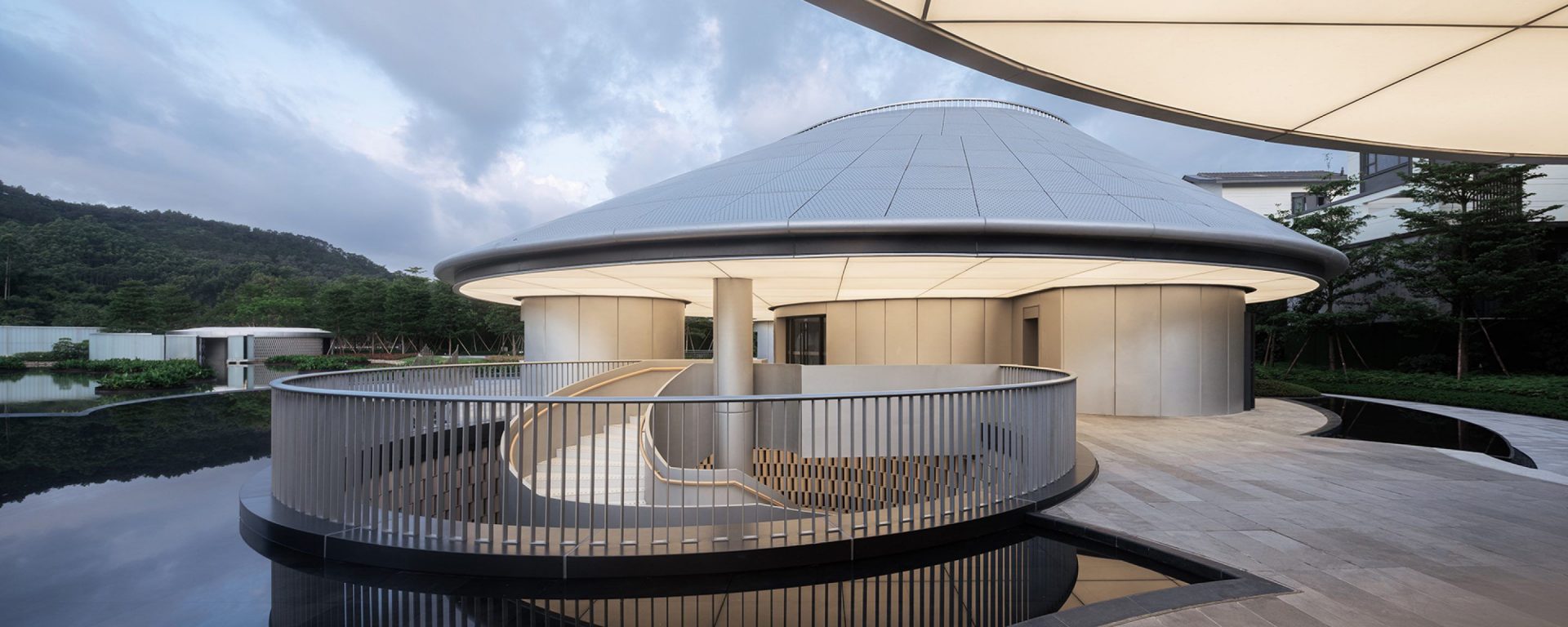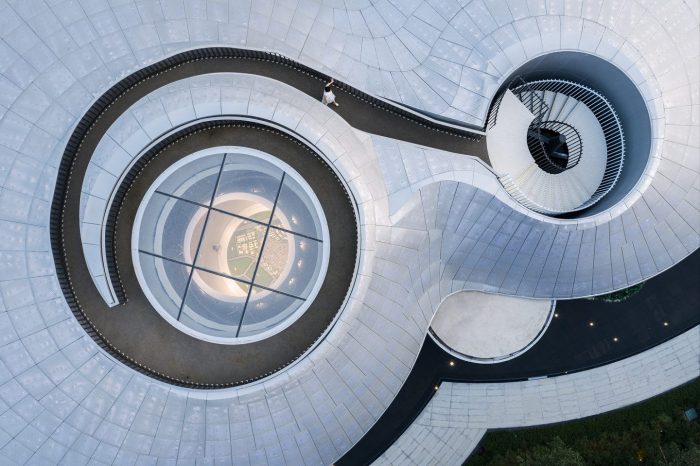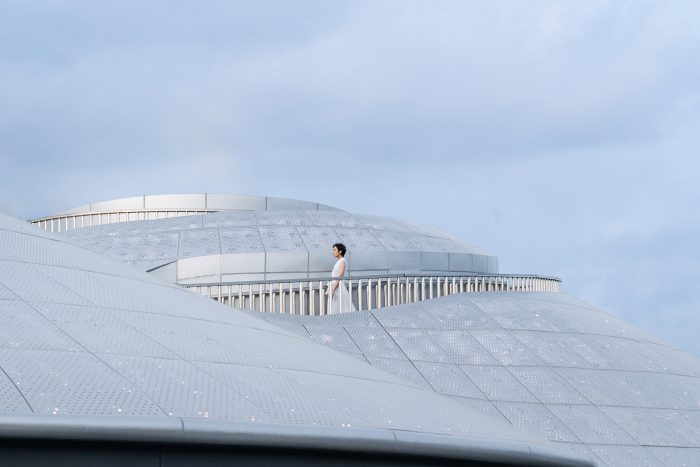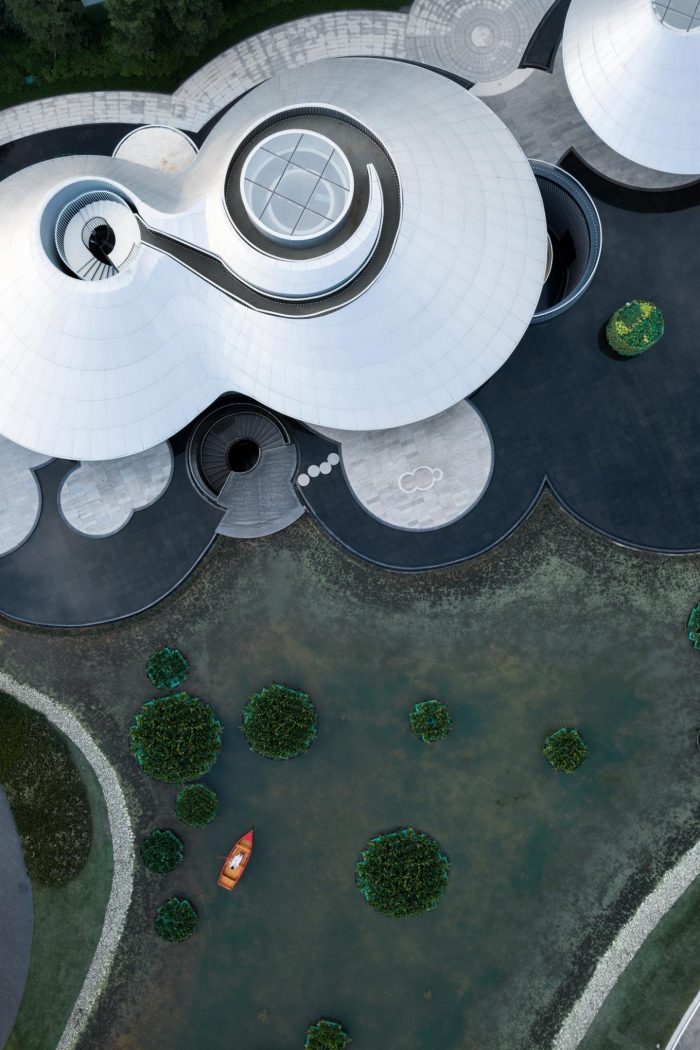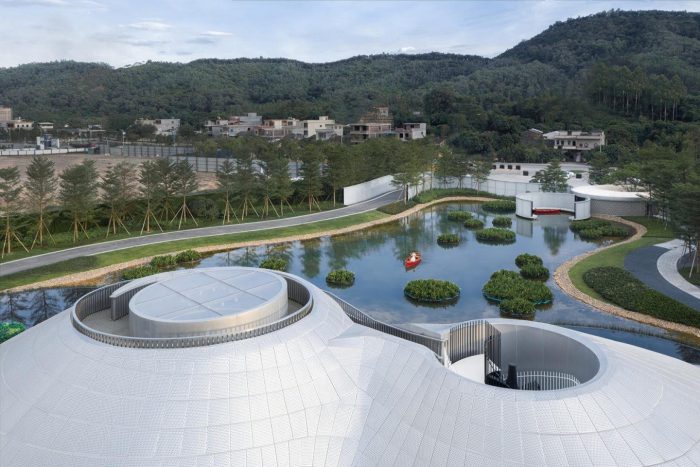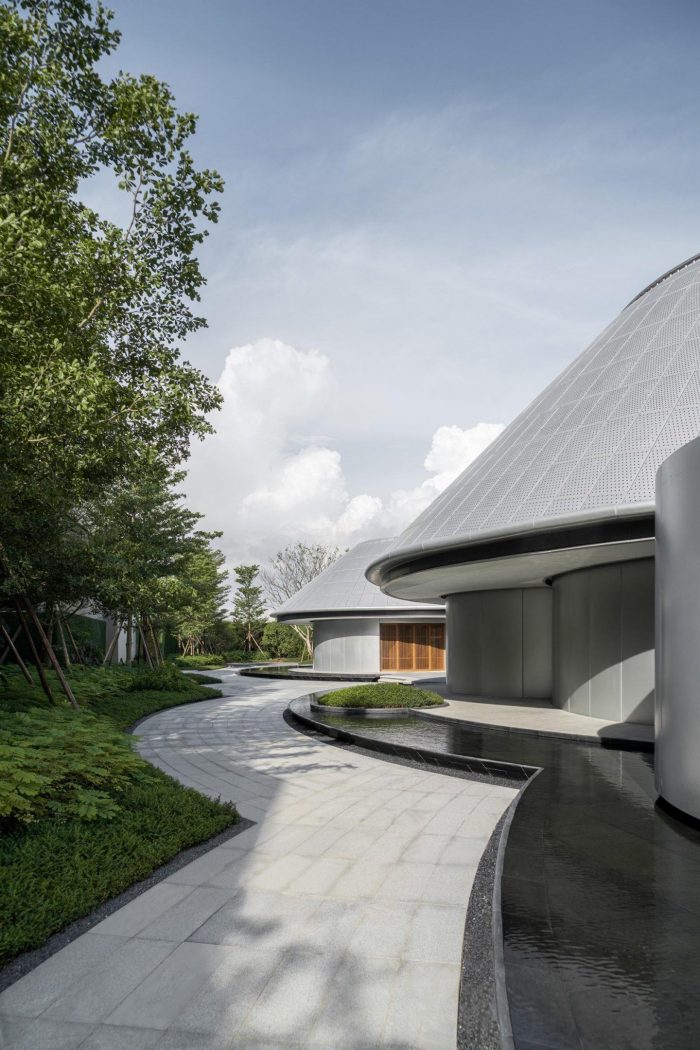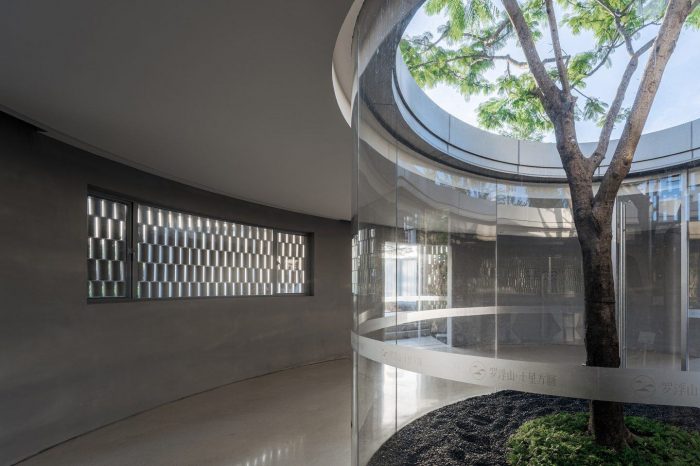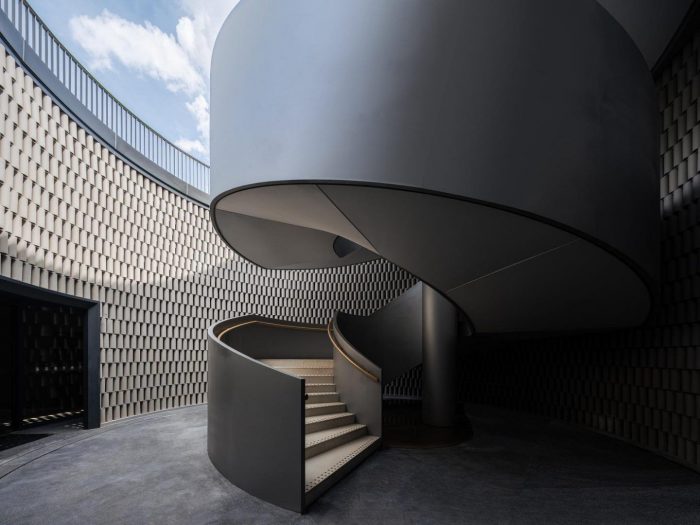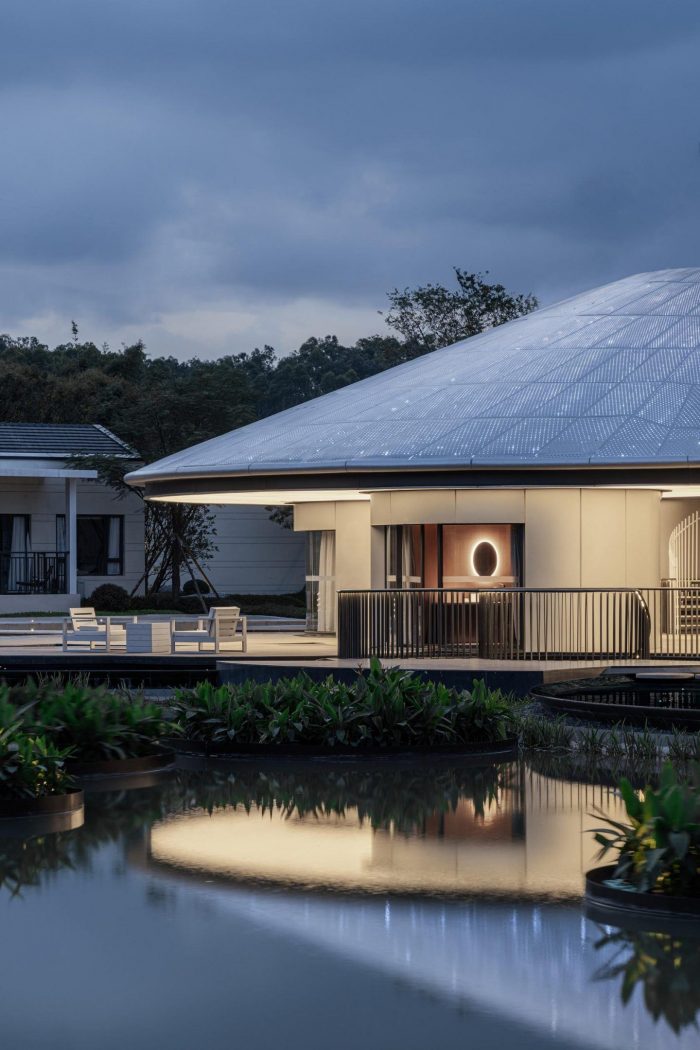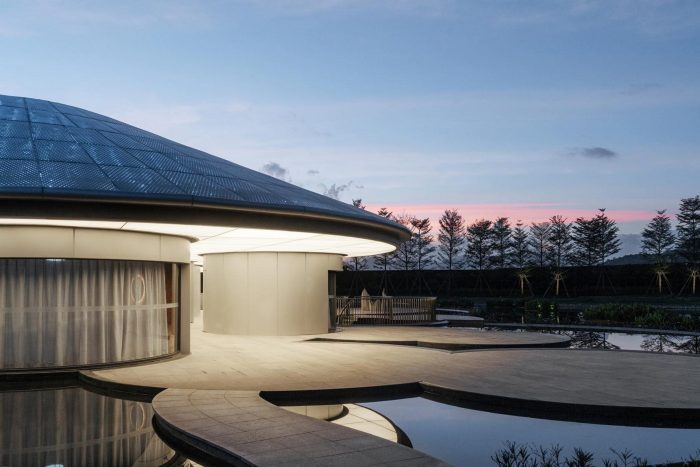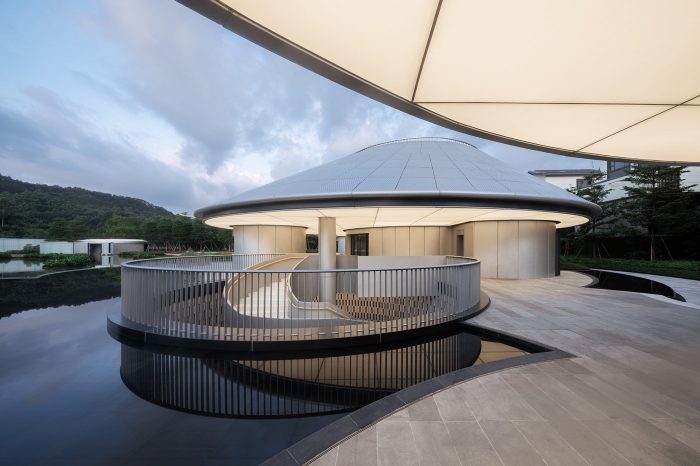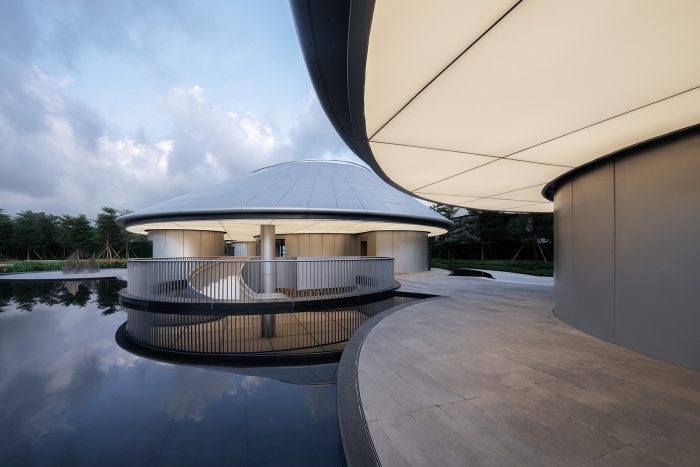具有前瞻性思维的中国建筑事务所“乌托邦实验室”设计了一个令人印象深刻的新展览中心,位于中国广东道教山罗浮附近。
该项目结合了建筑和自然,创造了一种平静的视觉体验,适合用于传统中医的建筑。“铝山”借鉴了道教的哲学元素,将三个地下圆锥形建筑与弯曲的池塘和花园搭配在一起。它的圆形几何体被起伏的景观设计所包围,这是由Z工作室构思的。该项目的总建筑师余婷的设计灵感来自中国文学“一海三山”。他决定用这个建筑来创造三座山,或者说是圆形建筑,它们将从大海般的景观中浮现出来,形成一个“人间天堂”。
The forward-thinking Chinese architecture practice Wutopia Lab has designed an impressive new exhibition center, located nearby the Daoist Mount Luofu in Guangdong, China.
The project marries architecture and nature to create a calming visual experience, fitting for a building used for traditional Chinese medicine. ‘Aluminium Mountain’ borrows from elements of Daoist philosophy, pairing three subterranean cone-shaped buildings with curving ponds and gardens. Its circular geometry is surrounded by an undulating landscape design that was conceived of by Z Studio. Chief architect of the project Yu Ting was inspired by a phrase from Chinese literature ‘one sea and three mountains’. He decided to use the architecture to create the three mountains, or circular buildings, that would emerge from a sea-like landscape to form an “earthly paradise.”
当夜晚被点亮时,这些建筑就像一盏巨大的灯。建筑的大部分功能被淹没在地下,隐藏在由大型混凝土柱支撑的金属屋顶下。“我想创造一种慢速的时间感,”余婷解释说。“我用连续的圆圈来形成地下空间,一个泡泡般的迷宫,包括模型展览空间和美术馆。在一个分层的迷宫中,我希望游客可以失去他们的时间和空间感。”
When lit up at night, the buildings emulate a giant lamp. Most of the building’s functions are submerged underground, sheltered beneath a metal roof that is held up by large concrete columns. “I wanted to create a slowed sense of time,” explains Ting. “I used continuous circles to form the underground space, a bubble-like maze that includes the model exhibition space and art gallery. In a layered maze, I hope that visitors could lose their sense of time and space.”
设计:Wutopia Lab
摄影:Wutopia Lab

